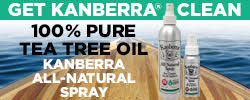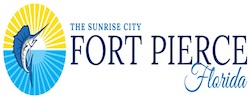A New Guide Release and a Commitment to a Worthy Cause
A New Guide Release and a Commitment to a Worthy Cause
Media Information: For immediate release
Sarasota, Florida ‘“ September 1, 2014 — Publishers and long time boaters Chuck Baier and Susan Landry of Beach House Publications announce the release of their fourth guide in The Great Book of Anchorages series, The Gulf Coast, Cape Sable, FL to Mobile, AL, Including the Okeechobee Waterway. This fourth guide has been the most requested to date by fellow boaters. The authors extensive on-the-water travels and research from their trawler Beach House provides the most comprehensive Gulf Coast anchorage guide currently in print. Previous guides in The Great Book of Anchorages series are The Chesapeake Bay, Including the Potomac River, Hampton Roads and Norfolk to The Florida Keys, Including the St. Johns River, and The Bahamas ‘“ The Route Most Traveled. Details are available on the website at https://www.tgboa.com/.
In dedication of this current release, the authors have made a commitment to donate $2.00 from every order placed between August 25, 2014 and September 30, 2014 to one of their favorite charities, The Wounded Warrior Project, http://www.woundedwarriorproject.org/. They also challenge other boating publications to offer similar donations. Owner Chuck Baier is himself a veteran from the Vietnam era and understands the need to provide support and additional services to the men and women that sacrifice so much for our country and freedom.
Beach House Publications and The Great Book of Anchorages series was conceived in August of 2012 on a laptop in the cabin of their Marine Trader trawler, Beach House. All of the guides have been researched, compiled, edited and distributed from their trawler while living aboard and cruising full time. In addition to publishing, the husband and wife team have been freelance writers for over 20 years and have shared their knowledge and experiences in such major boating publications as Cruising World, Bluewater Sailing, Soundings Magazine, Sail Magazine, Southern Boating, Lats and Atts, Marinalife Magazine, Nor’ Easter, Good Old Boat, Living Aboard Magazine and a host of internet sites. The pair often gives presentations to boating organizations such as individual Yacht Clubs, the Marine Trader Owners Association, Americas Great Loop Cruising Association and most currently, TrawlerFest Baltimore 2014.


If you would like more information on The Great Book of Anchorages series, would like to order books, or interview Chuck or Susan, call us at 713-244-4686 or email info@tgboa.com.
Website, https://www.tgboa.com/
Susan Landry, Publisher/Author/Editor
Chuck Baier, Publisher/Author
Beach House Publications
P.O. Box 1418
Sarasota, Florida 34230
713-244-4686
info@tgboa.com


















Comments from Cruisers (11)
Any suggestions on routing from Marathon Key to Dinner Key? I'm helping a friend bring his sailboat up aroung the 18th of June. We are thinking about getting in to the Gulf Stream.
i do that trip every fall. The weather broadcasts lists the mile location of the west side of the gulf stream. There is plenty of room between the shore and the west wall of the gulf stream to make way going south.
Just watch your GPS speed over ground, if you stray too far off the coast, you’ll see it in short order. Two years ago when I was asleep, the first mate got too far off Islamorada and as I said, the GPS speed clearly showed what was happening.
At night, I like to stay in rather deep water (>couple hundred feet) to minimize the problems with crab trap line fouling.
All the other advice looks good, but I would add use cold fronts to your advantage. When the front is coming the wind will clock from its usual SE direction to S then SW then W then NW. Leave when the wind gets into the west and stick close to shore for a fast reach/run down the coast in plenty of wind, but low seas because you have to stick close to shore to stay out of the Gulf Stream. At night I set my course to angle a bit further offshore until I notice our speed over ground declining and then I change course back towards shore a bit. That speed reduction means you’ve begun to hit the edge of the stream. During the day, hug the coast and enjoy lots of wind with calm seas.
We have made this trip several times in the last few years and have done it a couple different ways.
First, I agree with all the other comments on staying in 50′-100′ of water just offshore. Keep in mind there are a lot of small fishing boats along this stretch, especially north of Miami. There number drops once you are well past Key Biscayne.
If you plan on making all daylight transits, then logical stops after departing Lake Worth are Fort LaDeeDa (Lauderdale) where you can anchor, moor or pay a marina. Depending on the day of the week, a late afternoon arrival may coincide with departure of 1-5 cruise ships. Always an interesting experience entering the harbor with these behemoths exiting.
Next stop can be Miami or Key Biscayne. We enjoy anchoring just to the west of Key Biscayne provided winds are not strong out of the west. Or you can head to Dinner Key and take a mooring.
Next head down the Hawk Channel with a stop at Rodriguez Key or push all the way down to the Channel 5 (65′) bridge and anchor in Matacumbe Bight or Jewfish Hole. Holding isn’t great, but these anchorages are large and frequently empty except for the late afternoon jet skiers that frequent the calm waters of these areas.
At this point you are an easy daysail from Marathon/Boot Key Harbor.
Another alternative, if you have crew, radar and a good, up to date chart plotter with the most recent e-charts AND you get a good weather window, is to simply exit Lake Worth and head none stop over night. We have done this a few times and the Hawk channel is well marked and wide. Just need to watch for the occasional fishing boats popping out of Key Biscayne and Key Largo at night.
Safe sailing.
Cheers,
Jeff Graham
Thanks so much for everyone’s advice. I look forward to posting a “Made it to Marathon” post soon.
Smooth Sailing!
The big problem in the gulf stream. If you stay close in shore then you won’t get much effect. When I say inside, I mean 1 mile. Watch the SOG and move closer to shore. If you check the NOAA website they will give you the distance of the west wall of the stream off the coast. It changes day to day so keep an eye on it. When you get to Key Biscayne you can go in Govt Channel or keep heading south to cape florida and enter there. I have always gone around Cape florida. It can be a little confusing but it is marked well. If you are tired you can drop the hook in no name harbor, but not on the weekend. The weekend Warriors take over the place with the stereos maxed out. No services there except the restaurant . GO across to Coconut grove and take a ball at Diner Key. The staff is great and the local community is a spectacular place to hang out. we always seem to get stuck there for a month.
Dave Kuchenbecker
We do day stops, we go from Lake Worth to Ft. Lauderdale, and anchor in Lake Sylvia, takes a good day to do that. Then a short hop to Miami and anchor either north of Port of Miami, or south at Marine stadium.
Outside if weather permits you can stop at Rodriguez Key, then it’s Boot Key.
I’ve sailed extensively along the Southeast Florida coast down through the Keys. You don’t want to go out into the Gulfstream; The best route is to stick to relatively shallow water — maybe 50 or 100 feet, depending on conditions — along the shore. Not only will you avoid the northbound current, but you can sometimes pick up a southbound current there. If you are a little lucky, you will get E-SE winds and be able to sail the whole way. Even with a south wind, motorsailing is much faster and easier than flipping bridges on the Intracoastal. On an OK day, Hillsboro Inlet is a logical stop for overnight anchoring. There is a nice cove inside with decent anchoring. Keep going if the weather is bad, though. Hillsboro is extremely rough when the weather turns bad. After that, Port of Miami/Key Biscayne is a good place to stop.
The Gulf Stream actually puts off (south directional) eddies on its outer borders that can assist you in the southbound voyage, much like your northbound trip was with the full current of the stream. You will Just need to figure out by temp or other means (NOAA images) where those edges may be on any given day.
Vaughan, We’ve done this trip many times and our first comment is to watch the weather forecasts. That will be more of a determining factor than the Gulf Stream. Each day the Coast guard announces the west wall of the Stream and this should help you in your transit. Near Miami, the Stream can be as close a 1/2 mile or as far off as a couple of mile. But the current is only really strong in the axis or middle of the Stream. Stay close in to shore and you will not have a problem with currents. Just have a good set of charts and don’t get in too close. Once you reach Key Biscayne, go down Hawks Channel to Marathon. Once again, weather will play the most important role. Strong easterly winds will keep you in port. You can duck in at Port of Everglades or Miami if it gets uncomfortable. Chuck Baier
Chuck, You’ve perpetuated a common myth that the velocity of the GS current is really strong only in the axis. Off of south FL, the velocity is fairly consistent over the entire width (about 30 NM) of the GS. Shortly after entering it from the west – only a mile or two in – you’ll experience a full 2.5 to 3 kt current and it will rarely be more than about 3.5 kts near its axis.